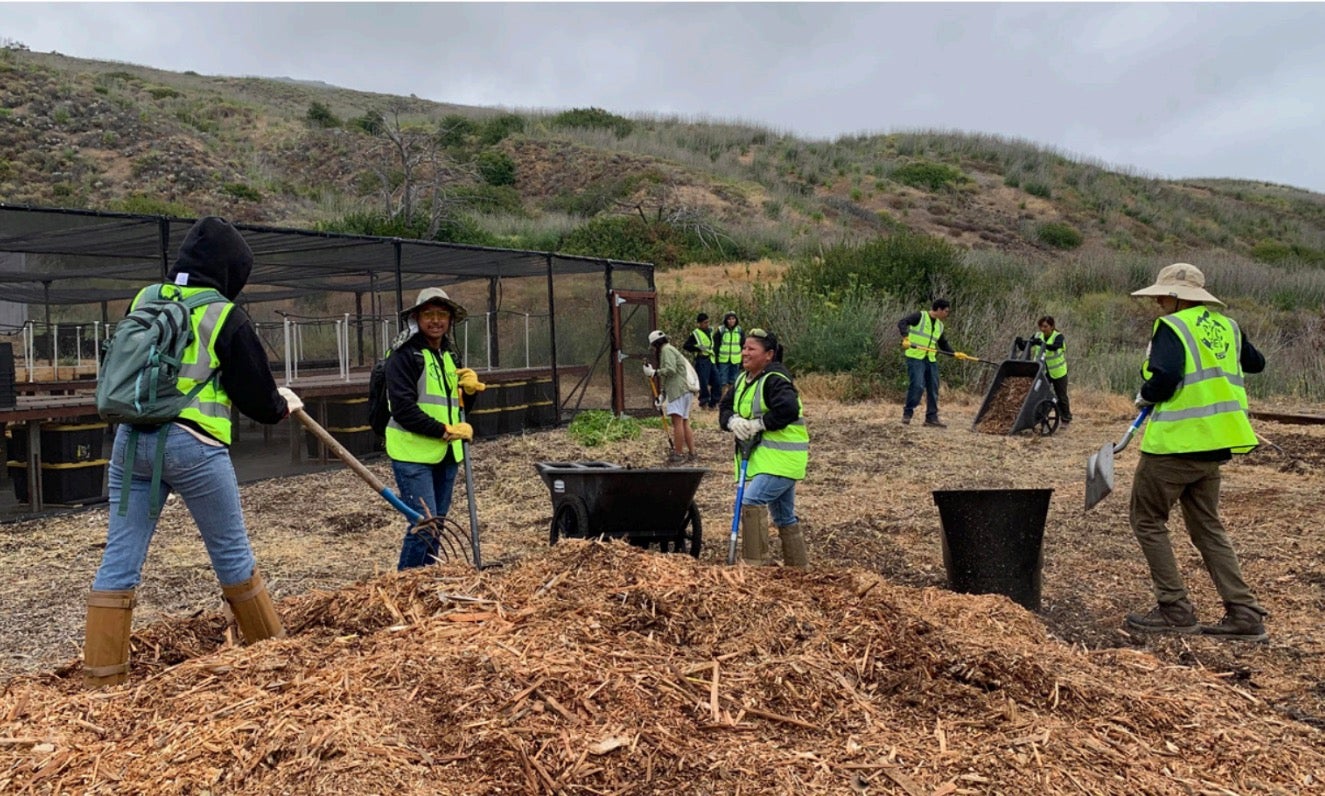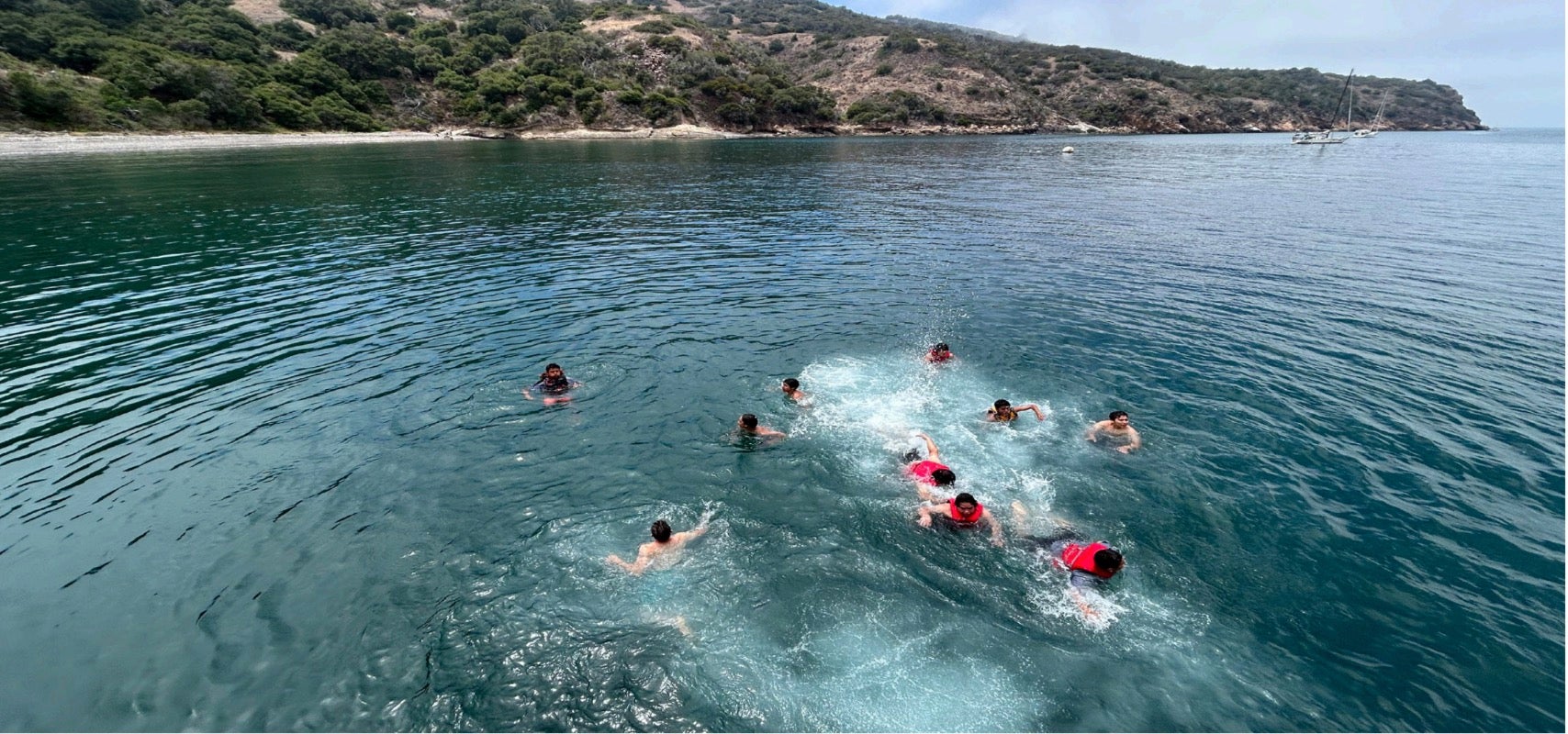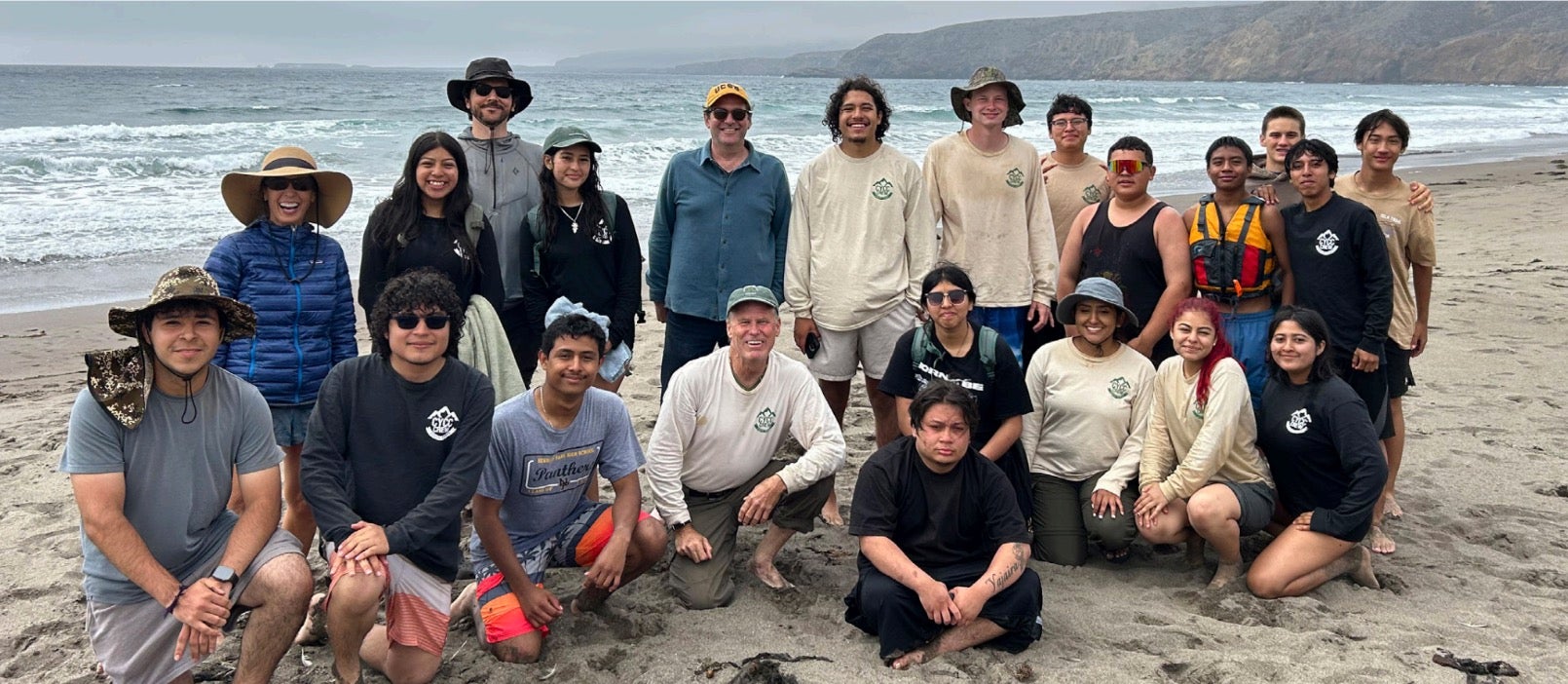This summer, through our partnership with Safe Passage’s Youth Conservation Corps (CYCC) and The Nature Conservancy (TNC), the Bren Environmental Leadership (BEL) program witnessed remarkable transformations as first-generation high school students discovered that advanced environmental careers are within their reach. High school students who had never imagined themselves in environmental sciences learned about oak woodland restoration on Santa Cruz Island and began to see advanced education as accessible.
Working alongside Bren PhD students James Cunningham and Ale Vidal Meza, students removed wooden fences, cleared vegetation, spread wood chips, and moved irrigation material. But more importantly, they developed scientific thinking, gained confidence in academic spaces, and discovered multiple pathways into environmental careers that extend far beyond traditional university routes.
“A lot of this stuff is brand new to them,” explains Bren PhD student James Cunningham, “so it’s fun and useful to teach them these things as they’re out and about doing the work.”
For many of these students — predominantly first-generation, low income, and from underrepresented communities — this hands-on experience revealed how their laborious conservation work directly protects biodiversity and ecosystems. What began as summer work became a window into previously unknown career possibilities.
Since its conception, the Bren Environmental Leaders Program (BEL Fellows) has been dedicated to increasing representation in environmental fields and creating pathways for postsecondary education. This initiative demonstrates that when PhD students share knowledge and connect with students, lives change and so does the future of environmental science.

The four day Santa Cruz Island trip allowed the students to immerse themselves into nature while gaining scientific literacy that would reshape how they viewed their work. Each day, James Cunningham and Ale Vidal Meza led ecology discussions that gave meaning to the student’s hands-on restoration efforts, covering topics such as trophic cascades and seed dispersal, to citizen science and data collection with iNaturalist.
The transformation was visible. James recalls one student who seemed disengaged at first, reluctant to participate in lessons. But as James tailored his approach to better connect with the students, the same participant began leaning into discussions and asking probing questions to deepen their understanding. “I like working with students. I enjoy showing them research and adjusting my work to their interests and seeing how they connect with it,” he remarks.
By the end of the trip, the high school students were able to use these newly learned concepts to accurately describe the work they were doing on the island, showing true comprehension. This deeper understanding flourished well during well-earned excursions that followed each day: hiking to a Native American midden, observing an Island Fox health workup, exploring tide pools, swimming at Prisoners Harbor, and learning about the native plant nursery. Each excursion gave students the chance to pepper PhD mentors and Bren staff with questions about the island’s ecology and history.
While the collective transformation was remarkable, individual stories reveal the program’s true power to redirect lives. For one student, those few days on Santa Cruz Island sparked an entirely new career vision. At 17, Michael A. had already spent two years with Safe Passage’s Youth Conservation Corps, participating in natural resource management projects across Santa Barbara and Ventura counties. The Santa Cruz Island trip initially appealed to him as simply another CYCC adventure, just on an island this time. But those trips changed everything. The ecology discussions opened his eyes to how completely separate the island ecosystem was from the mainland and how animals adapt without predators. More importantly, the experience revealed possibilities he’d never considered.
Now Michael has a clear path forward: two years at community college followed by a transfer to UC Santa Barbara to pursue environmental economics, a field he didn’t even know existed before time at Santa Cruz Island.
Michael’s story reflects a broader pattern of transformation that occurred across the entire group. The impact extended far beyond academic learning. Many students had never been to the beach, entered the ocean, or stepped foot on a boat before this trip. By the end of it, they had all gotten into the water; capturing the program’s power to expand horizons in unexpected ways.

But the lasting value lies in what students gained beyond those first-time experiences: essential teamwork and collaboration skills, practical job training, and most importantly, a supportive community and mentors they can turn to for guidance. For students interested in environmental careers, knowing people already working in that field transforms what seems inaccessible into achievable goals.
Every investment in the BEL Fellows program creates ripple effects that last lifetimes, turning curious teenagers into environmental leaders, expanding career horizons, and diversifying the field that will tackle our planet’s greatest challenges. Our partnership with CYCC has proven that with the right mentorship and exposure, remarkable transformations occur.
